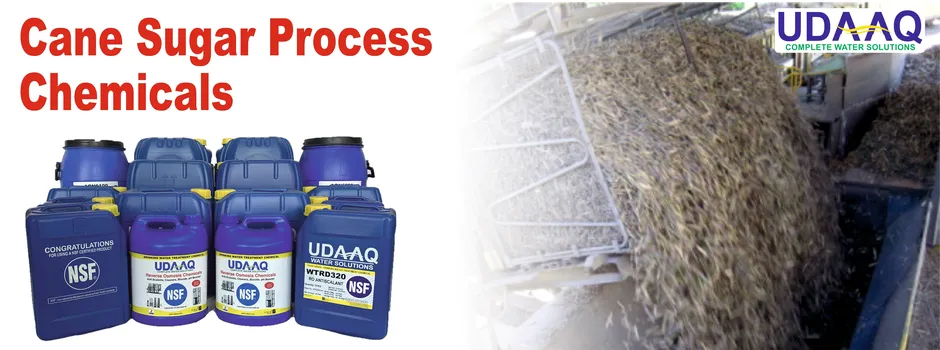Professional Cane Sugar Processing Chemicals: Superior Results
Professional Cane Sugar Processing Chemicals: Superior Results
Blog Article
Maximizar Rendimientos Y Minimizar Costos: Estrategias Avanzadas Para La Optimización Química Del Procesamiento De Azúcar De Caña
In the realm of walking stick sugar handling, the quest of making best use of yields while concurrently reducing prices stands as an awesome challenge that needs a critical mix of advanced chemical optimization techniques. The details of this undertaking dig into the core of performance, where every component of the procedure plays an important duty in accomplishing optimum results. By discovering the ins and outs of chemical analysis, enzyme usage, pH control, purification, and distillation techniques, a landscape rich with possibilities for enhancement and development emerges. Among this complex web of methods lies the promise of unlocking untapped possibility and changing the extremely essence of sugar production. Cane Sugar Processing Chemicals.
Chemical Evaluation for Performance
Chemical evaluation plays a critical function in enhancing the effectiveness of sugar walking cane processing by offering vital insights into the make-up and homes of the raw products. By conducting detailed chemical analyses on sugar walking stick samples, cpus can figure out the specific concentrations of sucrose, glucose, fructose, and other components existing in the raw product. This info is essential for optimizing the different phases of the sugar walking cane handling chain, from grating to crystallization.
Moreover, chemical evaluation enables cpus to determine impurities such as natural acids, proteins, and minerals that can influence the high quality and return of the final sugar item. By quantifying these pollutants, processors can carry out targeted methods to eliminate or reduce their effects, eventually improving the overall efficiency of the processing plant.
Furthermore, chemical evaluation facilitates the surveillance of process criteria such as pH, temperature, and viscosity, enabling processors to make real-time modifications to make certain ideal problems for sugar extraction and formation. On the whole, a thorough understanding of the chemical composition of sugar cane is crucial for maximizing yields, reducing prices, and keeping high item quality in the sugar production market.

Enzyme Use for Raised Yields
With a strategic approach to enzyme use, sugar cane cpus can significantly improve their returns while keeping functional efficiency in the production process. Enzymes play an essential role in sugar cane processing by breaking down complex carbohydrates right into simpler sugars, thus raising the general sugar extraction efficiency. By integrating certain enzymes tailored to target the different parts of sugar walking cane, such as cellulose and hemicellulose, processors can enhance the launch of sugars during removal.
Enzyme usage supplies the advantage of maximizing click for info sugar returns from the raw material while minimizing the power and resources required for processing. Through cautious selection and application of enzymes, sugar walking cane cpus can enhance their procedures to accomplish greater returns and profitability.
Ph Control for Optimum Handling
Enzyme usage for enhanced yields in sugar cane processing lays the structure for attending to the important element of pH control for ideal processing performance. Preserving the suitable pH level throughout different phases of sugar walking cane handling is important for optimizing returns and decreasing prices. By thoroughly monitoring and changing the pH levels at different handling actions, sugar walking stick cpus can boost sugar recuperation visit this web-site rates, decrease chemical usage, and optimize the general production process.
Advanced Filtering Methods
Implementing sophisticated purification techniques in sugar walking stick handling boosts the performance and purity of the final product with fine-tuned splitting up techniques. By integrating advanced filtration modern technologies, such as membrane purification and turned on carbon filtration, sugar cane handling plants can accomplish greater levels of sugar healing and improved top quality control.

Turned on carbon purification is an additional sophisticated method that helps in the elimination of colorants, off-flavors, and residual contaminations from sugar cane items. By using turned on carbon's adsorption properties, this purification technique improves the quality and preference of the sugar, fulfilling the high standards demanded by customers and sector guidelines.
Energy-Efficient Distillation Methods
Energy-efficient distillation methods are why not try this out important for optimizing the sugar cane handling industry's power consumption while preserving top notch item criteria. Typical distillation procedures can be energy-intensive, leading to higher manufacturing prices and environmental impacts (Cane Sugar Processing Chemicals). Implementing energy-efficient purification methods, such as vacuum distillation or molecular distillation, can considerably reduce power needs while improving overall process effectiveness
Vacuum distillation involves decreasing the stress within the purification system, which lowers the boiling factor of the fluid combination being refined. This reduction in boiling point decreases the power needed for evaporation, causing power savings contrasted to conventional distillation approaches.
On the other hand, molecular purification makes use of brief course distillation strategies under high vacuum conditions to different substances based upon their molecular weight. This technique is particularly effective for heat-sensitive compounds, as it operates at lower temperatures, decreasing energy usage and protecting product top quality.
Conclusion

Report this page